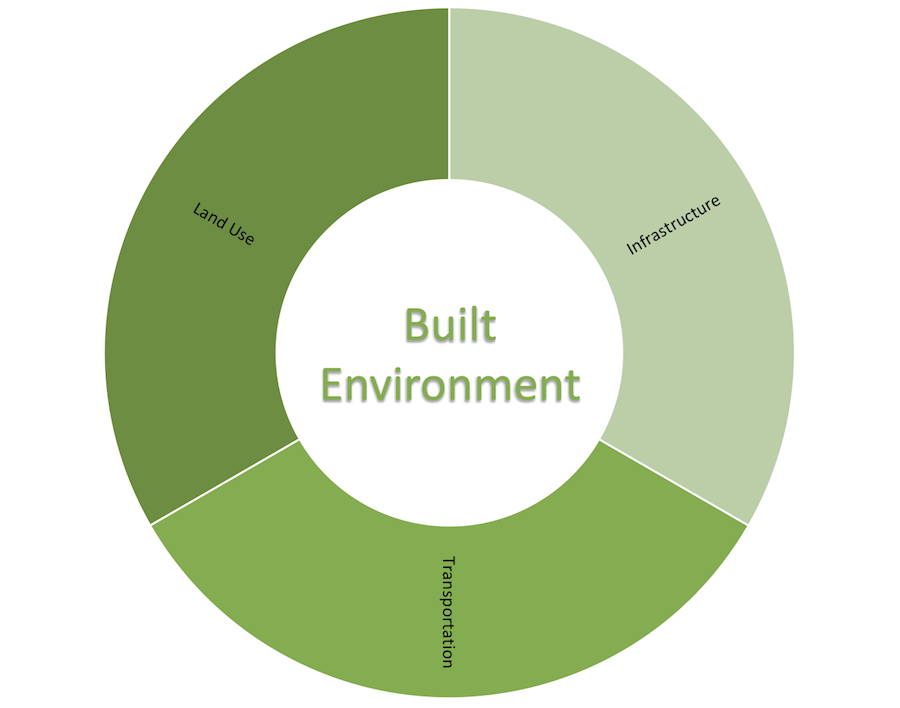Built Environment Indicators
The built environment is comprised of the places we live, work, and spend our time. In this way, our quality of life is greatly impacted by the quality of our built environment. The built environment consists of a large portion of the services that comprise the ordinary quality of life such as housing, transportation, and energy. Accordingly, identifying aspects of the built environment in need of improvement can be the first step in obtaining an immediate improvement in the overall quality of life. Identifying aspects of the built environment that are already satisfactory or exceeding expectations can give planners and developers the necessary information to avoid any negative impacts to the overall quality of life.

Transportation
Transportation describes the quality of how people commute and travel. Our modern lifestyle generally relies on the use of vehicles to travel to and from work, errands, and recreation. Wide use of motorized vehicles has obvious benefits to society such as increased capacity to travel long distances, flexibility in work and recreation options, and independence. On the other hand, increased dependence on personal vehicles increases dependence on fossil fuels, increases traffic congestion, and can contribute to an unhealthy, sedentary lifestyle.
Infrastructure
Our infrastructure encompasses the systems we have in place to utilize the resource used to improve our lives. This includes not only the systems we have in place to deal with physical waste or generate energy, but also the systems we put in place to provide access to our natural resources. A robust infrastructure supports a high quality of life by providing reliable access to these resources without causing damage through unsustainable utilization